Idea by
Dana Barale Burdman
Call for ideas 2021
The Net Blvd
The Net Blvd
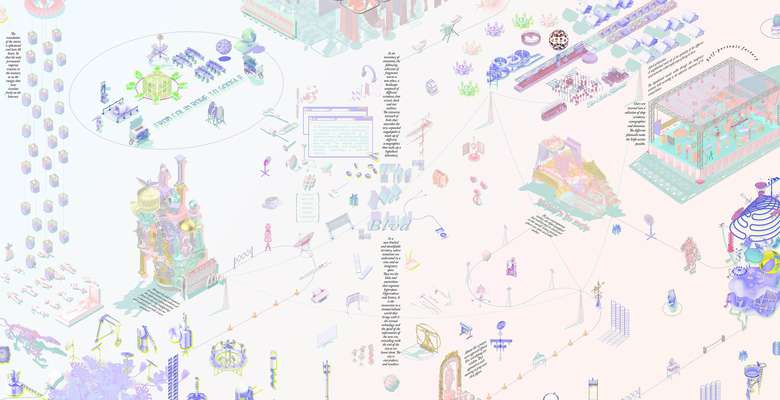
- New alliances
The Net Blvd stands as a diagnosis of our contemporary world and its current conditions in a complex time when the digital overlaps the physical. As it examines and catalogues a series of situations that, departing from the digital platforms, imply new ways of understanding our surrounding. The drawings corroborate the relevance that the following digital situations have: the self-design of our images, the growing audio-visual surveillance, the construction of identities or the tools that we use to archive our imaginaries, they are a few situations that the project registers. The project proposes a set of scenarios that explore their architectural implications. With this strategy, different fragments of the city of Madrid are cases of study, as the testing grounds for the narratives and configurations that the project develops, understanding our urban context in its complexity, where contradictions and superimposed realities coincide whilst new virtual environments are produced.

The Net Blvd is a fragmentary landscape made up of a succession of different scenarios of encounter between the physical and the virtual, which forms a laboratory of hypothesis: an experimental microcosm. This new ecosystem reformulates new fields to understand the complex reality of our context. Making us reflect on the categories in which we experience reality today. From a methodological guide for the redescription of the city.
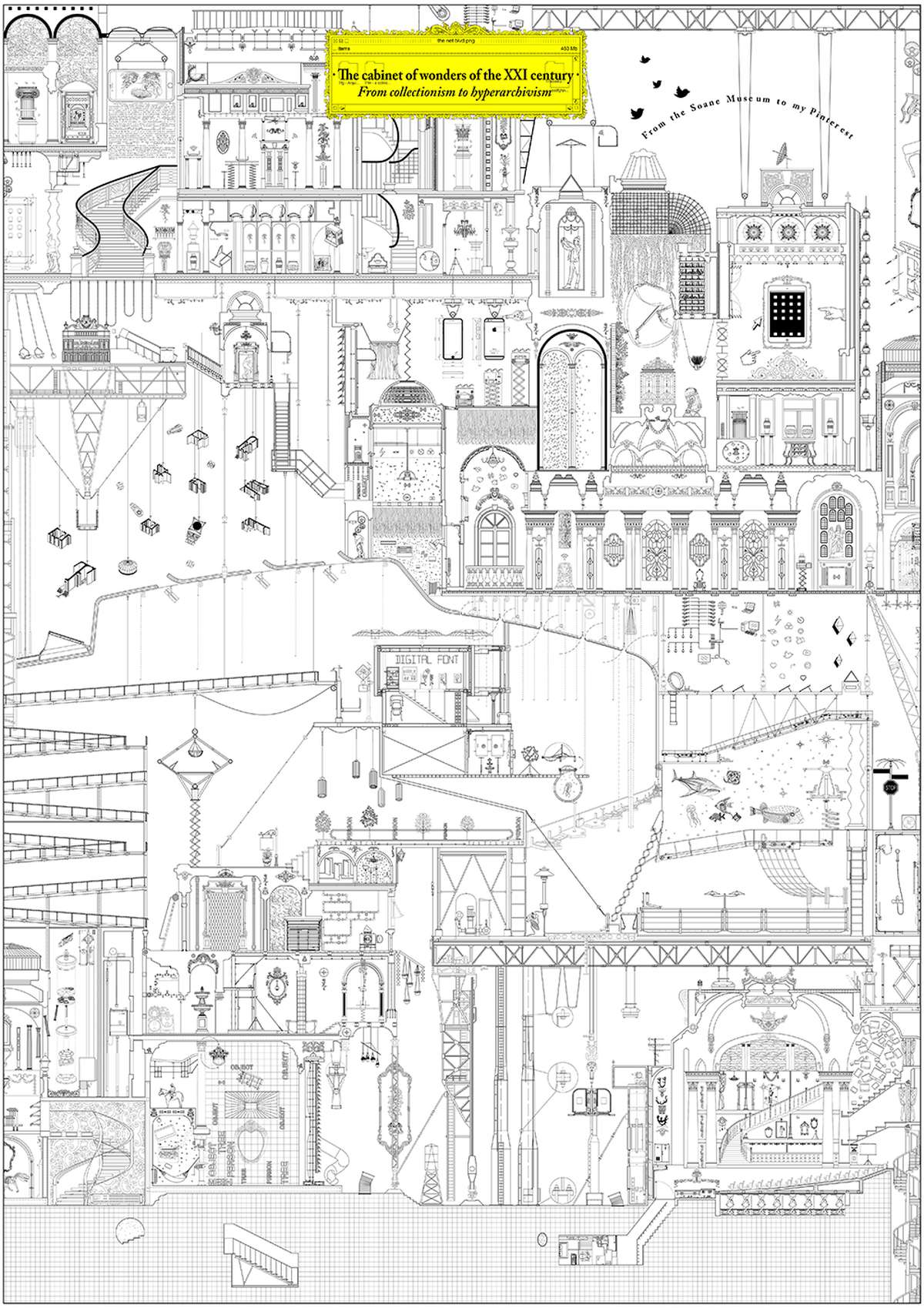
The cabinet of wonders of the XXI century - From collectionism to hyperarchivism:
The first cabinets where exotic objects were collected and exhibited from different parts of the planet appeared in the XVI century. Due to the increasing technological incorporation, registration is no longer reserved for the extraordinary. Images are the object of consumption of our collections.
Social networks are the new iconic repositories that order and categorize the world.

The self-portrait Factory - Broadcast of the self:
Spaces are multiplied and experienced online. Social networks reshape the physical space in which we move, changing our relationship with everything that surrounds us. We curate our identities through this subjective construction of spaces. Social networks are the new museum space. The body becomes a ready-made. The self becomes an image, exposing their subjectivity: perpetually self-collecting, self-designing, self-advertising.
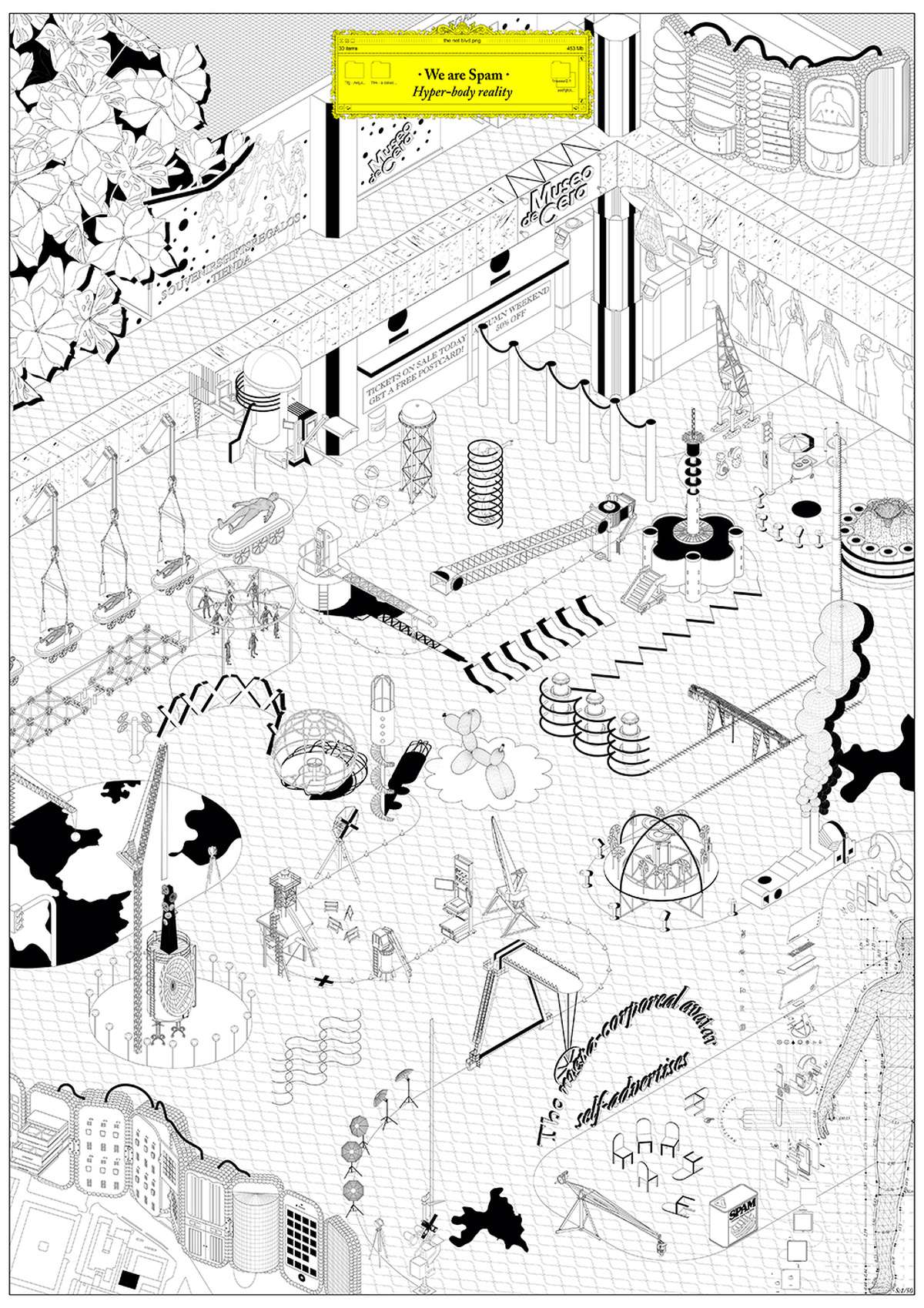
We are Spam - The hyper-body reality:
We render ourselves, exposing our ideal image on digital storefronts.
The self is released every day through the ideal configuration of the self. We identify ourselves with avatars that represent us in the virtual world and allow us to display various ways of being ourselves through a multiple identity.
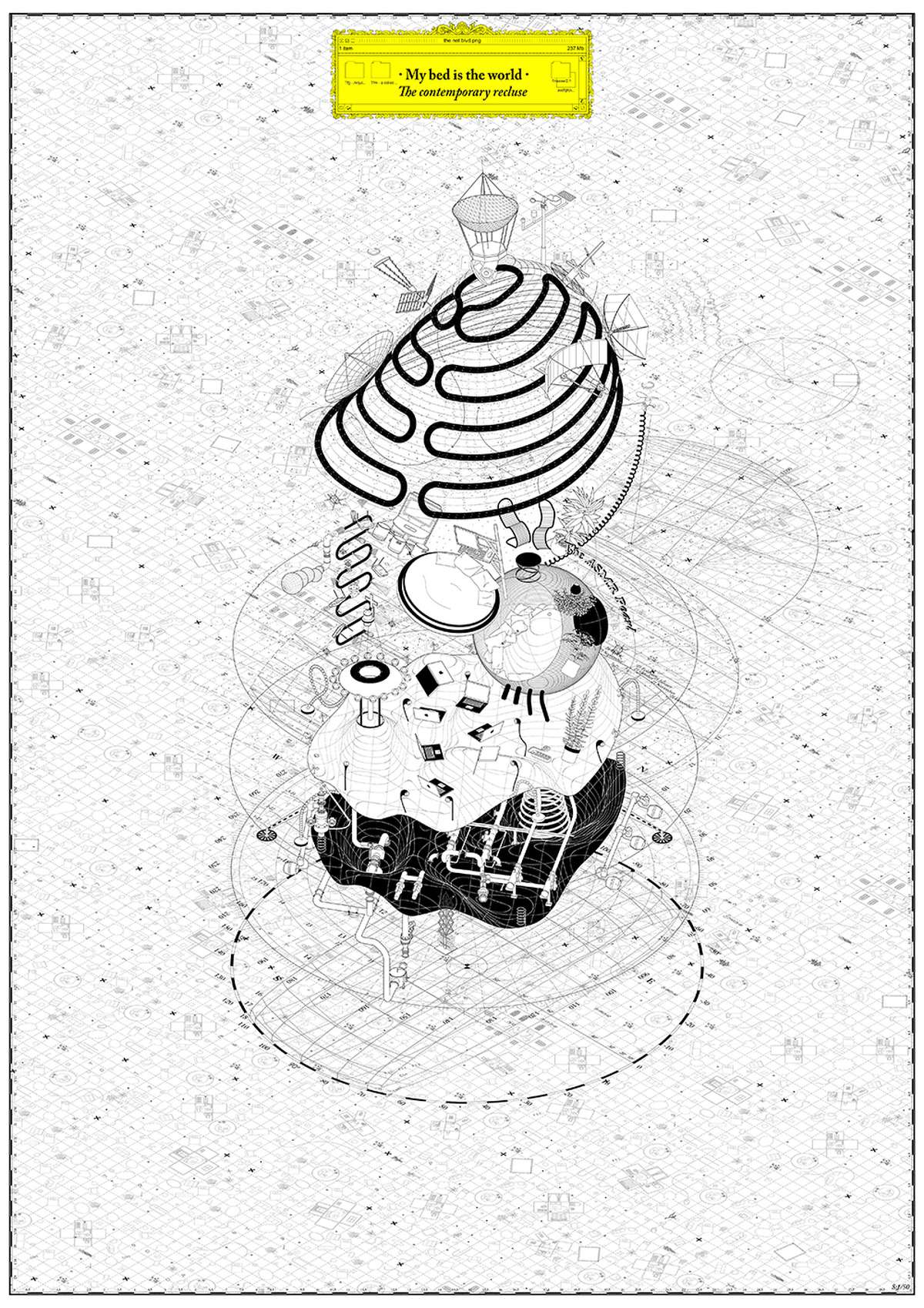
My bed is the world - The contemporary recluse: The degree of intimacy in the traditional space and the online realm has been reversed. How is intimacy to be understood in the virtual environment? In this media house, the bedroom becomes the contemporary territory of digital exploration. The bed is the physical-virtual link. The bed is not so much a place to rest, but the place from where we act and interact. The bed is the minimum module for the virtual nomad.
The Net Blvd
The Net Blvd

- New alliances
The Net Blvd stands as a diagnosis of our contemporary world and its current conditions in a complex time when the digital overlaps the physical. As it examines and catalogues a series of situations that, departing from the digital platforms, imply new ways of understanding our surrounding. The drawings corroborate the relevance that the following digital situations have: the self-design of our images, the growing audio-visual surveillance, the construction of identities or the tools that we use to archive our imaginaries, they are a few situations that the project registers. The project proposes a set of scenarios that explore their architectural implications. With this strategy, different fragments of the city of Madrid are cases of study, as the testing grounds for the narratives and configurations that the project develops, understanding our urban context in its complexity, where contradictions and superimposed realities coincide whilst new virtual environments are produced.
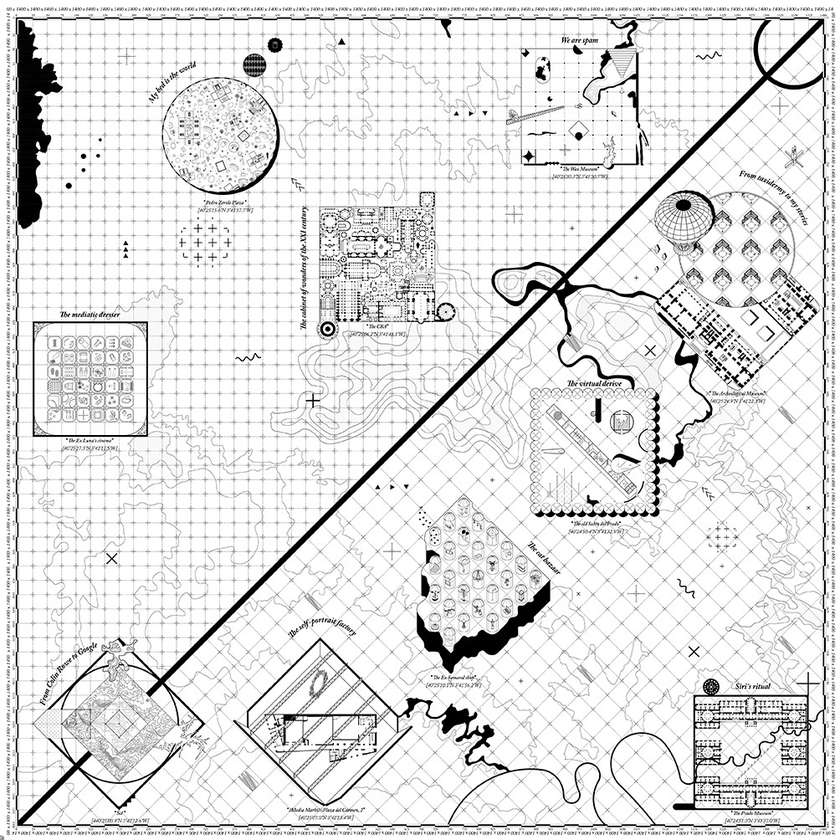
The Net Blvd is a fragmentary landscape made up of a succession of different scenarios of encounter between the physical and the virtual, which forms a laboratory of hypothesis: an experimental microcosm. This new ecosystem reformulates new fields to understand the complex reality of our context. Making us reflect on the categories in which we experience reality today. From a methodological guide for the redescription of the city.
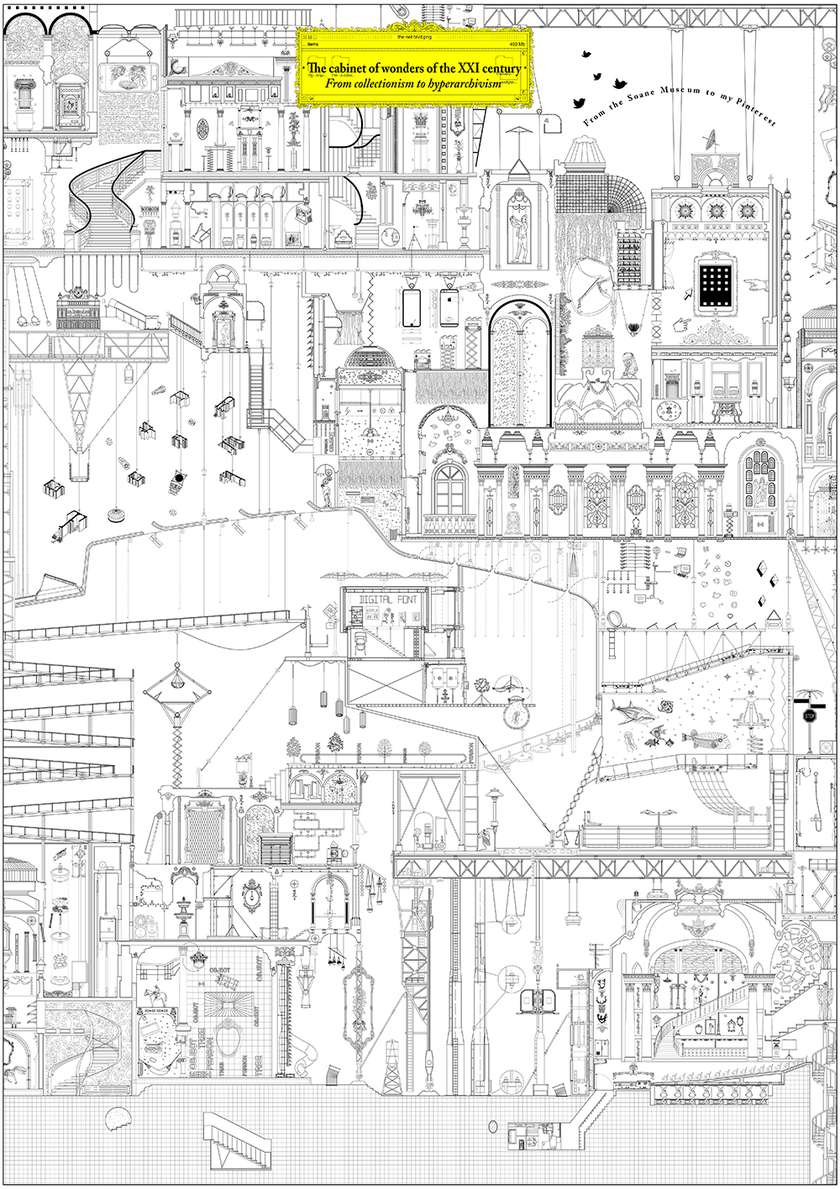
The cabinet of wonders of the XXI century - From collectionism to hyperarchivism:
The first cabinets where exotic objects were collected and exhibited from different parts of the planet appeared in the XVI century. Due to the increasing technological incorporation, registration is no longer reserved for the extraordinary. Images are the object of consumption of our collections.
Social networks are the new iconic repositories that order and categorize the world.
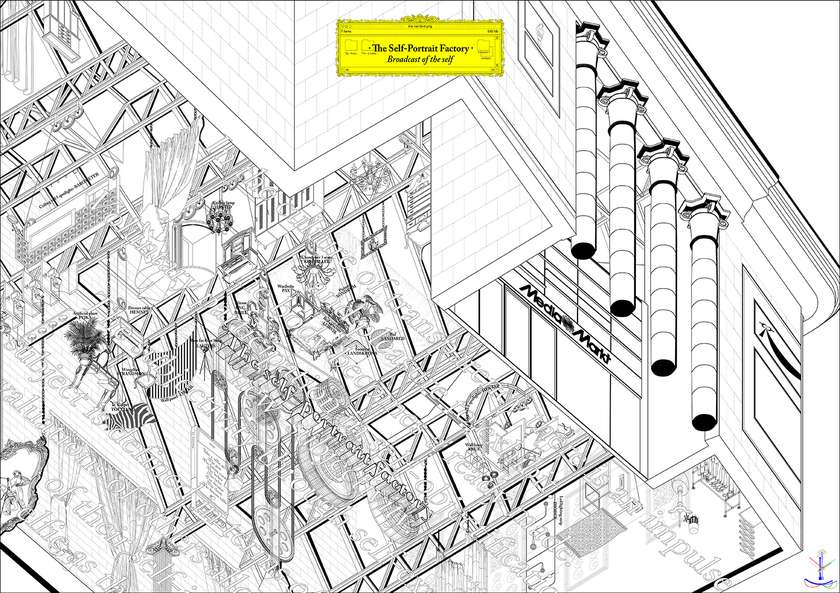
The self-portrait Factory - Broadcast of the self:
Spaces are multiplied and experienced online. Social networks reshape the physical space in which we move, changing our relationship with everything that surrounds us. We curate our identities through this subjective construction of spaces. Social networks are the new museum space. The body becomes a ready-made. The self becomes an image, exposing their subjectivity: perpetually self-collecting, self-designing, self-advertising.
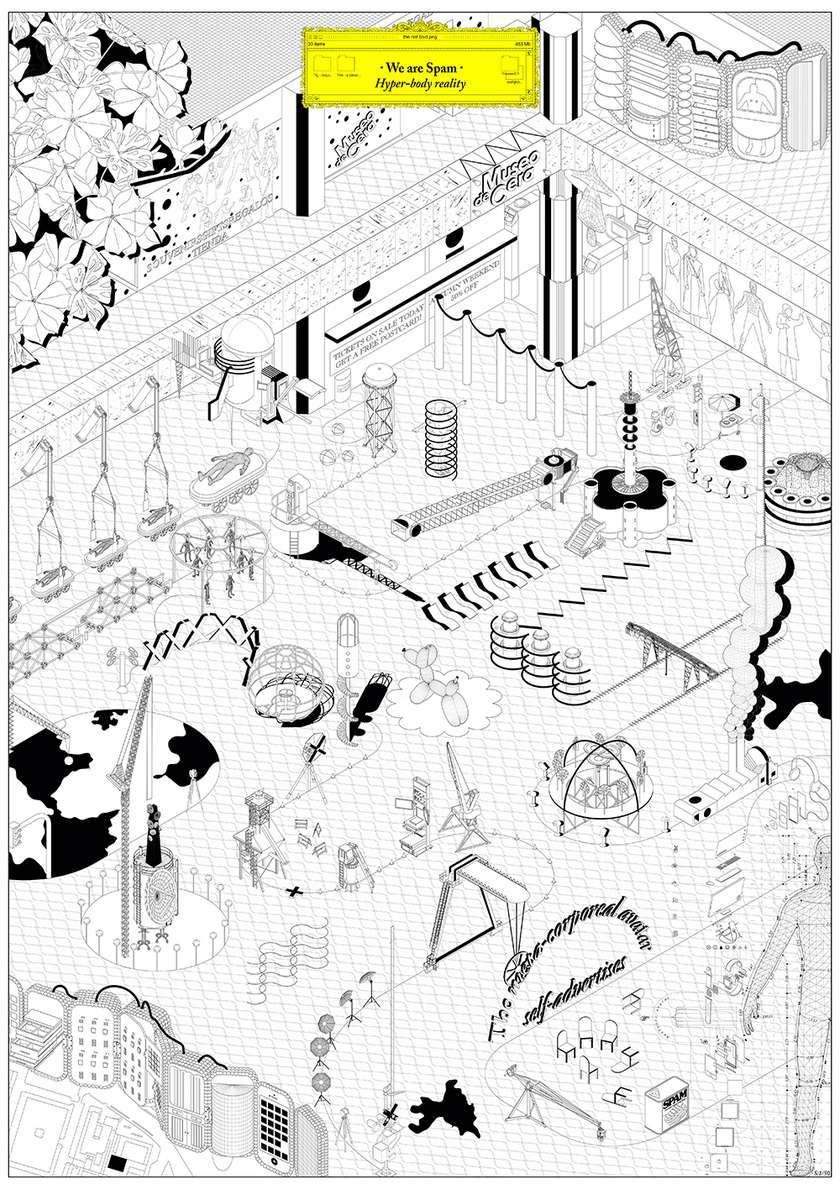
We are Spam - The hyper-body reality:
We render ourselves, exposing our ideal image on digital storefronts.
The self is released every day through the ideal configuration of the self. We identify ourselves with avatars that represent us in the virtual world and allow us to display various ways of being ourselves through a multiple identity.
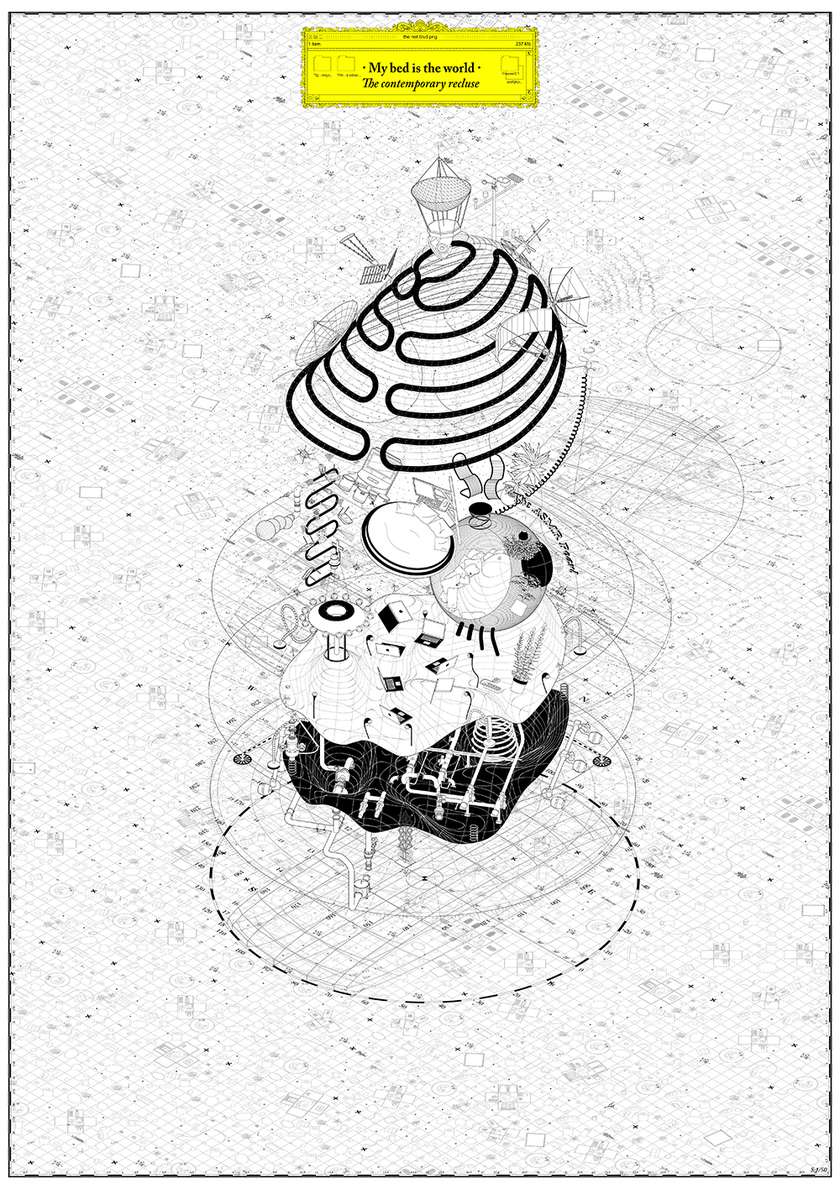
My bed is the world - The contemporary recluse: The degree of intimacy in the traditional space and the online realm has been reversed. How is intimacy to be understood in the virtual environment? In this media house, the bedroom becomes the contemporary territory of digital exploration. The bed is the physical-virtual link. The bed is not so much a place to rest, but the place from where we act and interact. The bed is the minimum module for the virtual nomad.